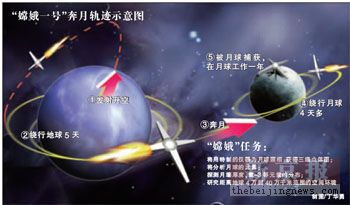China's 1st lunar probe ready for launch
(Xinhua)Updated: 2007-03-06 22:25
| |||
Luan said that almost 10,000 scientists, experts and technicians have joined the program. "Starting from scratch, we developed the Chang'e I lunar orbiter and the whole subsidiary project by ourselves within three years," he said.
Another leading scientist, former commander-in-cheif of the launch vehicle system of the country's manned space mission Huang Chunping, told Xinhua early Tuesday that the Chang'e I will be launched later this year. But no date was given for the flight.
The orbiter will provide 3D images of the moon's surface, probe the distribution of 14 usable elements on the moon, study lunar microwaves and estimate the thickness of the moon's soil.
Huang also said the country's new generation carrier rocket, designed to launch a space station, will be ready in seven to eight years.
The new generation large-scale carrier rocket is likely to be named Long March 5 and its payload capacity can be increased from nine tons to 25 tons, he said.
Design of the new generation carrier rocket's engines has been completed. Researchers succeeded in the engine's first testing in mid-2006, said Huang, also a member of the CPPCC National Committee.
Huang also told Xinhua that China's goal to land spacemen on the moon can surely be achieved in 15 years.
China's moon exploration program will be carried out in three stages. The orbiter will be followed by a remote-controlled lunar rover. In the third phase, a module will drill out a chunk of the moon and bring it back to earth.
Luan said China started a program of developing large-scale carrier rocket last year. "China is expected to have 1,060 carrier rockets after eight years. By then, the country's ability to launch satellites will be greatly improved."
However, he said that the most difficult problem for China to put astronauts on the moon is the low thrust of its rockets. "Moon landing needs a rocket with 3,000 to 4,000 tons of thrust. But currently the most powerful thrust carrier rocket is at around 600 tons."
|
||
|
||
|
|


